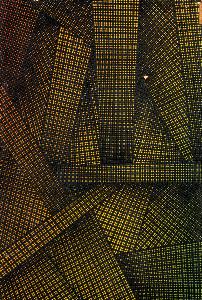Mario Nigro
Mario Nigro
Place: Pistoia
Born: 1917
Death: 1992
Biography:
Mario Nigro was a renowned Italian artist, born in 1917 in Pistoia, Italy, and passed away in 1992. He is celebrated for his significant contributions to the development of abstract art in Italy. Nigro's artistic journey began with a strong foundation in chemistry and pharmacology, which he studied at the University of Pisa. However, his true passion lay in music and painting, which he pursued with great dedication.
Early Career and Influences
Nigro's early work was influenced by post-Cubist movements, but he soon shifted towards abstract art, joining the Movimento d’Arte Concreta in the late 1940s. This exposure to various artistic styles and movements shaped his unique approach to art. In 1949, Nigro moved to Milan, where he held his first solo exhibition at the Libreria Salto. His work was characterized by a mix of geometric shapes, vibrant colors, and a sense of spontaneity.
Artistic Style and Notable Works
Nigro's artistic style was marked by a fascination with the relationship between color, form, and space. He explored various techniques, including oil on canvas, to create dynamic and expressive pieces. Some of his notable works include "Composizione", which showcases his mastery of abstract art. Nigro's work can be found in several museums, including the Galleria Nazionale d'Arte Moderna e Contemporanea in Rome.
Exhibitions and Recognition
Nigro's work gained international recognition in the 1950s and 1960s. He participated in the Salon des Réalités Nouvelles in Paris in 1951, and in 1964, he was invited to the 32nd Venice Biennale, thanks to the recommendation of Lucio Fontana. In 1968, Nigro had a solo room at the Venice Biennale, cementing his reputation as a leading figure in Italian abstract art.
- Some of Nigro's notable exhibitions include the Biennale di Venezia and the Salon des Réalités Nouvelles.
- His work can be found in the collections of the Galleria Nazionale d'Arte Moderna e Contemporanea and the Museo di Arte Moderna e Contemporanea in Rome.
- Nigro's artistic style is characterized by geometric shapes, vibrant colors, and a sense of spontaneity.
Legacy and Impact
Mario Nigro's contributions to Italian abstract art are immeasurable. His unique approach to art, which blended music, chemistry, and painting, paved the way for future generations of artists. Nigro's work can be seen on Wikioo.org, where his paintings are available for art lovers to appreciate and purchase. For more information on Nigro's life and work, visit Wikioo.org. You can also explore the Wikipedia page for more information on Mario Nigro and his artistic contributions.

